Watford
Explore hidden histories, historic photos, and things you never knew about Watford from the collections and archives of Historic England.
Discover your local listed buildings and places
Introducing some of Watford's most historic sites, included in the National Heritage List for England. Some of these captions have been summarised by AI. Click through for the official List entry. Skip this section and go to place by numbers
Replica of the Mohne Dam, in the grounds of the Building …
St. Stephen
The Garston replica Mohne Dam is a rare surviving test dam from World War II, crucial for experimental trials before the famous Dambuster Raid on Germany’s Ruhr dams.
Sugden House, 2 Farm Field
Watford
A detached house built in 1956 for Derek and Jean Sugden, designed by Alison and Peter Smithson.
The Old Station House (formerly the booking office to Wat…
Watford
Former booking office to the original Watford Railway Station, built in 1837 for the London and Birmingham Railway.
Leavesden Road Baptist Church
Watford
Baptist church with hall and institute. Constructed in phases 1895-6 to the designs of Kennet John Beecham and 1908-9 to designs by George Baines and Son.
97 High Street
Watford
House and commercial premises, built in the early C18 with some C20 alterations.
Langleybury War Memorial
Abbots Langley
First World War memorial, with later additions for the Second World War. Erected 1919, with the names of the Fallen of the Second World War added after 1945.
Watford Peace Memorial
Watford
First World War memorial with addition of Second World War inscription. Originally erected in 1928. Bronze sculptures by Mary Pownall Bromet, cast by Morris Singer and Co. Ltd.
Explore more
Search for more listed placesWatford through time
This timeline shows the first period of use for buildings and places on the National Heritage List for England, just one of the details recorded for every list entry. Click around to see how Watford changes over time. Skip this section and go to aerial photos
Medieval AD 1066 to AD 1540
This period, sometimes known as the Middle Ages, began with the Norman invasion in AD 1066. It saw a significant rise in military and defensive buildings such as castles and earthworks, as well as religious houses dominating a largely agricultural landscape.
The monarchy and Church dominated the period, which also saw the break with the Roman Catholic Church and the English reformation.
Post medieval AD 1540 to AD 1901
The Post-Medieval period brought seismic changes to life in England, with religious reformation leading to the democratization of worship and the destruction of hundreds of religious houses.
In parallel, there was a huge expansion of scientific study and enlightenment that permanently altered the nation's social structure and landscape. Industrialization and mass production lead to wider global trade, emigration, and immigration.
20th century AD 1901 to AD 2000
The 20th century saw an incredible expansion of England's transport networks, with suburban growth shadowing rapid infrastructural expansion. The establishment of state schools, hospitals, and modern technical colleges, with new architectural styles, radically changed the appearance of towns and cities.
Two catastrophic world wars and the 1918 pandemic also brought unprecedented change, altering England's built environment and social structures forever.
Medieval AD 1066 to AD 1540
This period, sometimes known as the Middle Ages, began with the Norman invasion in AD 1066. It saw a significant rise in military and defensive buildings such as castles and earthworks, as well as religious houses dominating a largely agricultural landscape.
The monarchy and Church dominated the period, which also saw the break with the Roman Catholic Church and the English reformation.
Post medieval AD 1540 to AD 1901
The Post-Medieval period brought seismic changes to life in England, with religious reformation leading to the democratization of worship and the destruction of hundreds of religious houses.
In parallel, there was a huge expansion of scientific study and enlightenment that permanently altered the nation's social structure and landscape. Industrialization and mass production lead to wider global trade, emigration, and immigration.
20th century AD 1901 to AD 2000
The 20th century saw an incredible expansion of England's transport networks, with suburban growth shadowing rapid infrastructural expansion. The establishment of state schools, hospitals, and modern technical colleges, with new architectural styles, radically changed the appearance of towns and cities.
Two catastrophic world wars and the 1918 pandemic also brought unprecedented change, altering England's built environment and social structures forever.
Aerial photos of Watford
Aerial photography helps reveal secrets of England's changing landscapes that are impossible to see from the ground. Skip this section and go to archive images
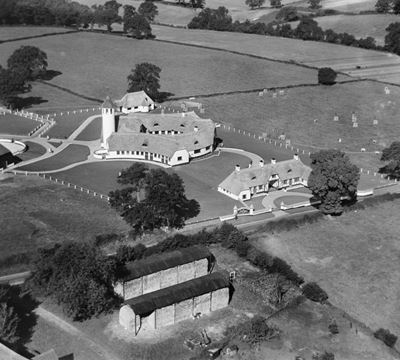
Abbots Langley
The Ovaltine Model Dairy Farm, Abbots Langley, 1932

Abbots Langley
The Ovaltine Dairy Farm and environs, Abbots Langley, 1939

Watford
The High Street and the town centre, Watford, 1932

Watford
The High Street and environs, Watford, 1948

Watford
Benskins Brewery and environs, Watford, 1931

Watford
High Street and the town, Watford, 1949
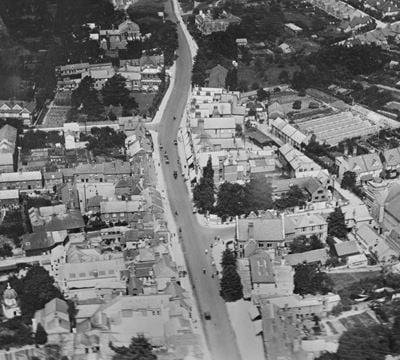
Watford
The High Street, Watford, 1920
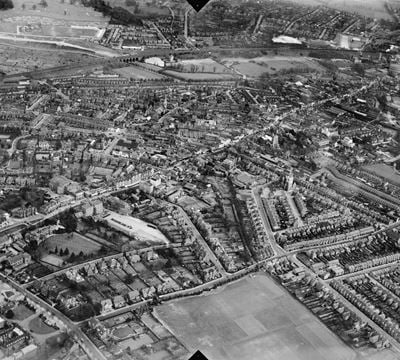
Watford
The town, Watford, 1950
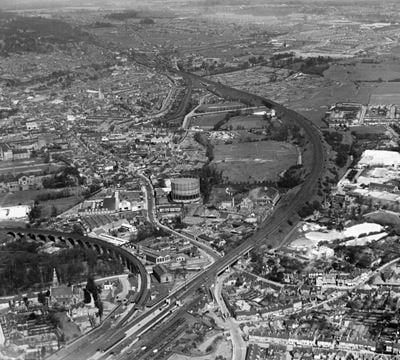
Watford
The London, Midland & Scottish Railway (LMSR) Bushey Curve, the High Street and environs, Watford, 1936
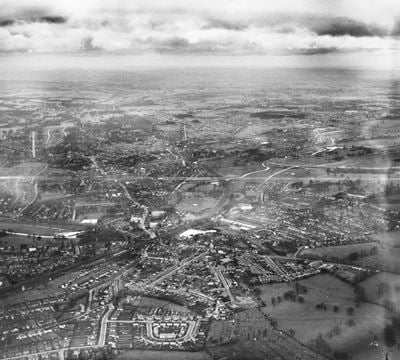
Watford
The London, Midland and Scottish Railway Line near Bushey Hall and environs, Watford, 1938
Watford in the Historic England Archive
The Historic England Archive cares for over 15 million images, dating from the 1850s to the present day. Discover stunning images of Watford's past. Skip this section and go to stories about heritage
John Gay Collection: Modern Architects
Watford, Hertfordshire
Date created: 1970 - 1979
The steps leading to the Clarendon Road entrance to St Martin's House, a late 20th century office building in Watford
John Gay Collection: Counties
Three Rivers, Hertfordshire
Date created: 1972
The tower of St Lawrence's Church viewed from the south west
John Laing Collection
Nascot Wood, Watford, Watford, Hertfordshire
Date created: 10 Nov 1999
The sales and marketing director for Laing Homes North Home Counties using a webpad to operate an Internet Home on the Brandon Gate development in...
Nigel Temple Collection of Postcards of Parks and Gardens
Watford Heath, Watford, Watford, Hertfordshire
Date created: 1900 - 1920
GENERAL VIEW LOOKING TOWARDS THE HOUSE
John Gay Collection: Modern Architects
Watford, Hertfordshire
Date created: 1970 - 1975
View across a car park and Clarendon Road to the east elevation of St Martin's House
John Gay Collection: Counties
Three Rivers, Hertfordshire
Date created: 1972
St Lawrence's Church Vicarage viewed from the south east
John Laing Collection
Nascot Wood, Watford, Watford, Hertfordshire
Date created: 10 Nov 1999
The sales and marketing director for Laing Homes North Home Counties scanning the barcode of a tin of food, in the kitchen of an 'Internet Home' on...
Nigel Temple Collection of Postcards of Parks and Gardens
Watford, Hertfordshire
Date created: 1900 - 1940
GENERAL VIEW SHOWING UPTURNED TREE TRUNK IN FOREGROUND AND BANDSTAND BEYOND
John Gay Collection: Modern Architects
Watford, Hertfordshire
Date created: 1970 - 1975
View of the east elevation of St Martin's House with steps in the foreground, from the north-east
John Laing Collection
Nascot Wood, Watford, Watford, Hertfordshire
Date created: 10 Nov 1999
A bedroom in an Internet Home on the Brandon Gate development in Watford
John Gay Collection: Modern Architects
Watford, Hertfordshire
Date created: 1970 - 1975
View of the east elevation of St Martin's House with steps in the foreground, from the north-east
John Laing Collection
Nascot Wood, Watford, Watford, Hertfordshire
Date created: 10 Nov 1999
The living room in an Internet Home on the Brandon Gate development in Watford
Stories about heritage in your local area
Historic England publishes news, blogs, research, videos, and podcasts celebrating England's rich heritage. Discover the stories we have about Watford. Skip this section and go to education
A Brief History of Gurdwaras in England
Mentions Sikh Community Centre
There are thought to be over 200 gurdwaras across the UK.
Women Architects Who Helped Shape England
Mentions Sugden House, 2 Farm Field
Women have always influenced domestic design but it wasn’t until 1898 that the first female architect was admitted to the Royal Institute of British...
A Brief Introduction to Shopping Parades
Mentions Monmouth House
Shopping parades are a familiar sight in urban areas across England.
Amazing Architecture on the Underground
Mentions Watford Station
London Underground has a history of thoughtful and thorough design and detail
“I’m Sorry But What Is a Scheduled Monument?”
Mentions Replica of the Mohne Dam, in the grounds of the Building Research Establishment, Garston
We’ve had Scheduled Monuments (sometimes known as Ancient Monuments) since 1882 when the Ancient Monuments Protection Act was passed.
War Memorials to Airmen Listed to Mark Centenary of the Royal Air Force
Mentions War Memorial Cross at St Matthew's Church, Oxhey
To mark the centenary of the RAF, 14 war memorials to airmen are being listed or upgraded by DCMS on the advice of Historic England.
Public Asked to Chronicle the Nation’s Missing History
Mentions Replica of the Mohne Dam, in the grounds of the Building Research Establishment, Garston
The nation's list of historic buildings and places is now open to public contributions for the first time ever.
Watford's social history through photos
Over 10,000 images from the Historic England Archive have been specially selected and re-captioned for teachers, students, and anyone who wants to learn more about their local area. Skip this section and go to grant-aided places
Watford General Hospital, Vicarage Road, Watford, Hertfordshire
Period: Victorian (1837 - 1901)
This building is part of Watford General Hospital. The hospital was originally Watford Union Workhouse.
Watford General Hospital, Vicarage Road, Watford, Hertfordshire
Old Grammar School, Watford, Hertfordshire
Period: Victorian (1837 - 1901)
A view of the classroom in the Grammar School in Watford.
Old Grammar School, Watford, Hertfordshire
Midland Bank, High Street, Watford, Hertfordshire
Period: Edwardian (1902 - 1913)
This bank was built in 1905. It is architecturally excellent as a sophisticated Baroque Revival design.
Midland Bank, High Street, Watford, Hertfordshire
Tags
Market Place, Watford, Hertfordshire
Period: Victorian (1837 - 1901)
Looking down the street with stationary carts and wagons outside the Spread Eagle public house. The Essex Arms and SPQR Stores stand opposite.
Former Orphan Asylum, Orphanage Road, Watford, Hertfordshire
Period: Victorian (1837 - 1901)
This building was originally part of the London Orphan Asylum.
Former Orphan Asylum, Orphanage Road, Watford, Hertfordshire
Bedford and Essex Almshouses, Church Street, Watford, Hertfordshire
Period: Tudor (1485 - 1602)
In 1580 Francis Earl of Bedford and the Lady Bridget his wife founded this row of 8 almshouses.
Bedford and Essex Almshouses, Church Street, Watford, Hertfordshire
Tags
Discover more
Ready for more local stories? Take a look at these other places nearby
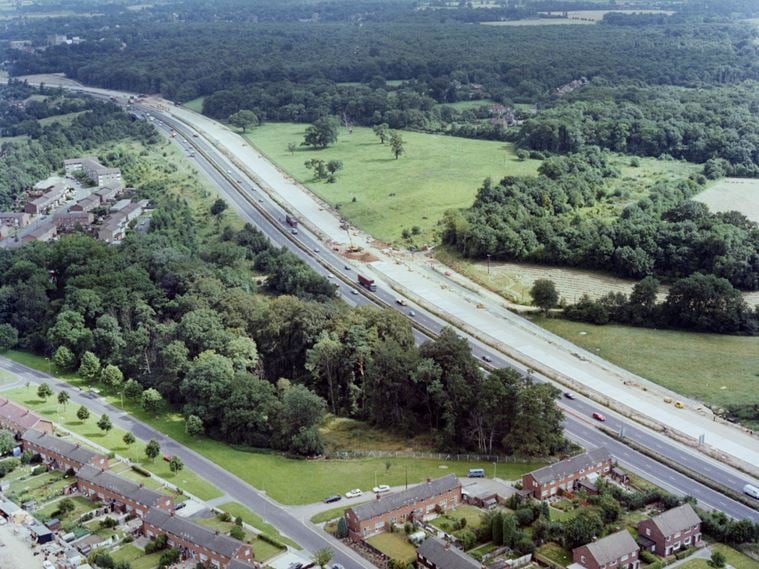
Watford
Local Authority District
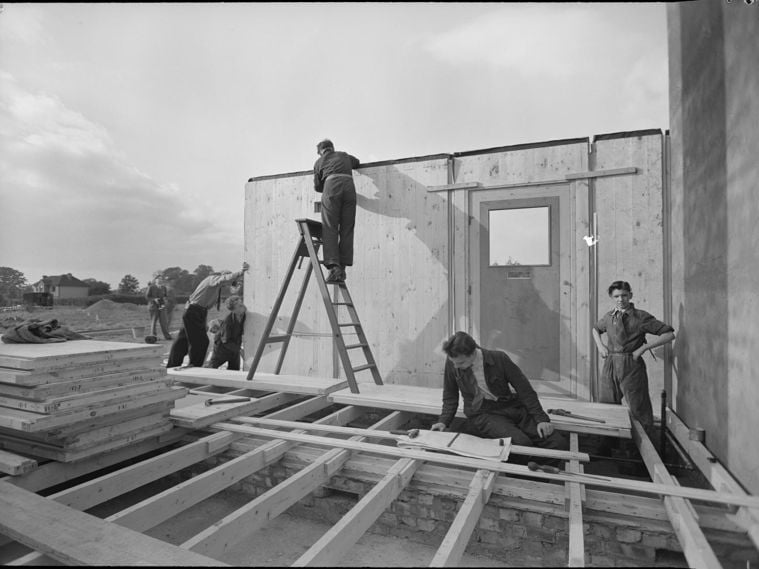
Three Rivers
Local Authority District

Hertsmere
Local Authority District